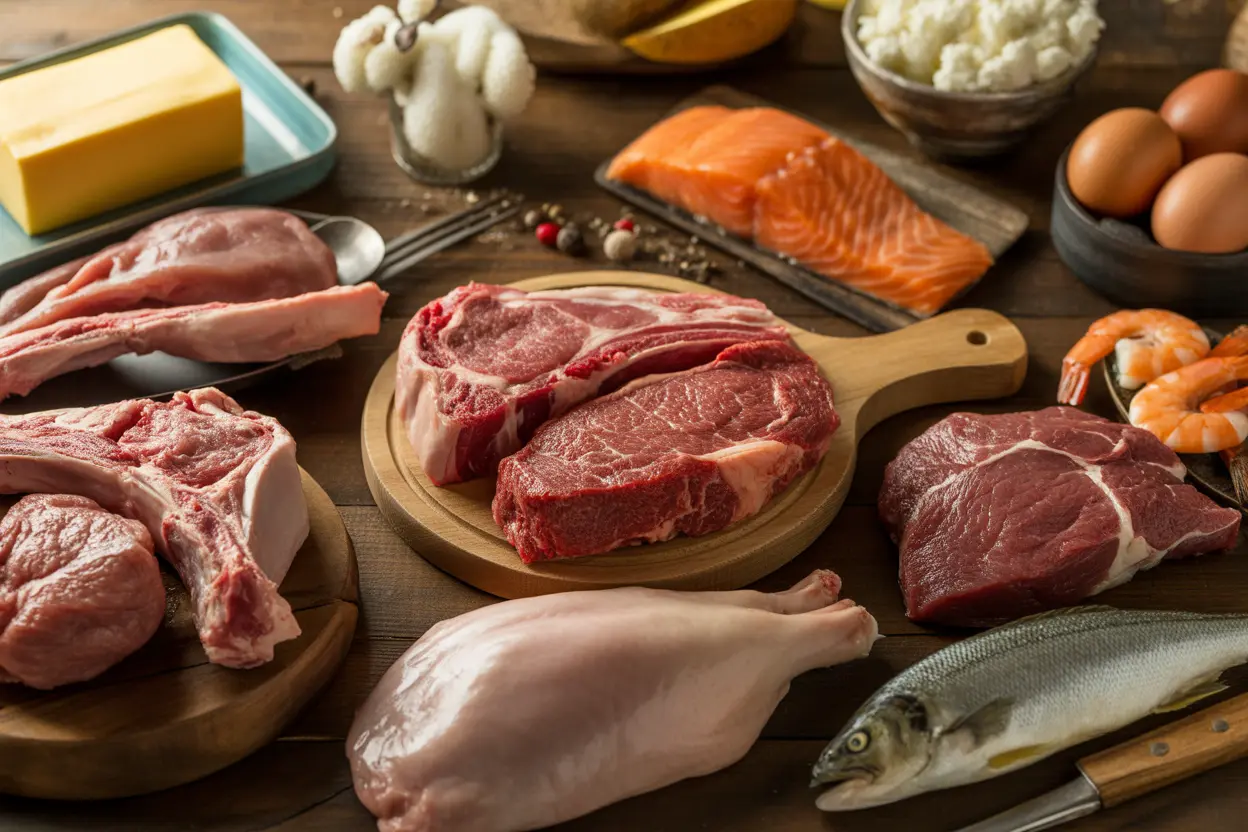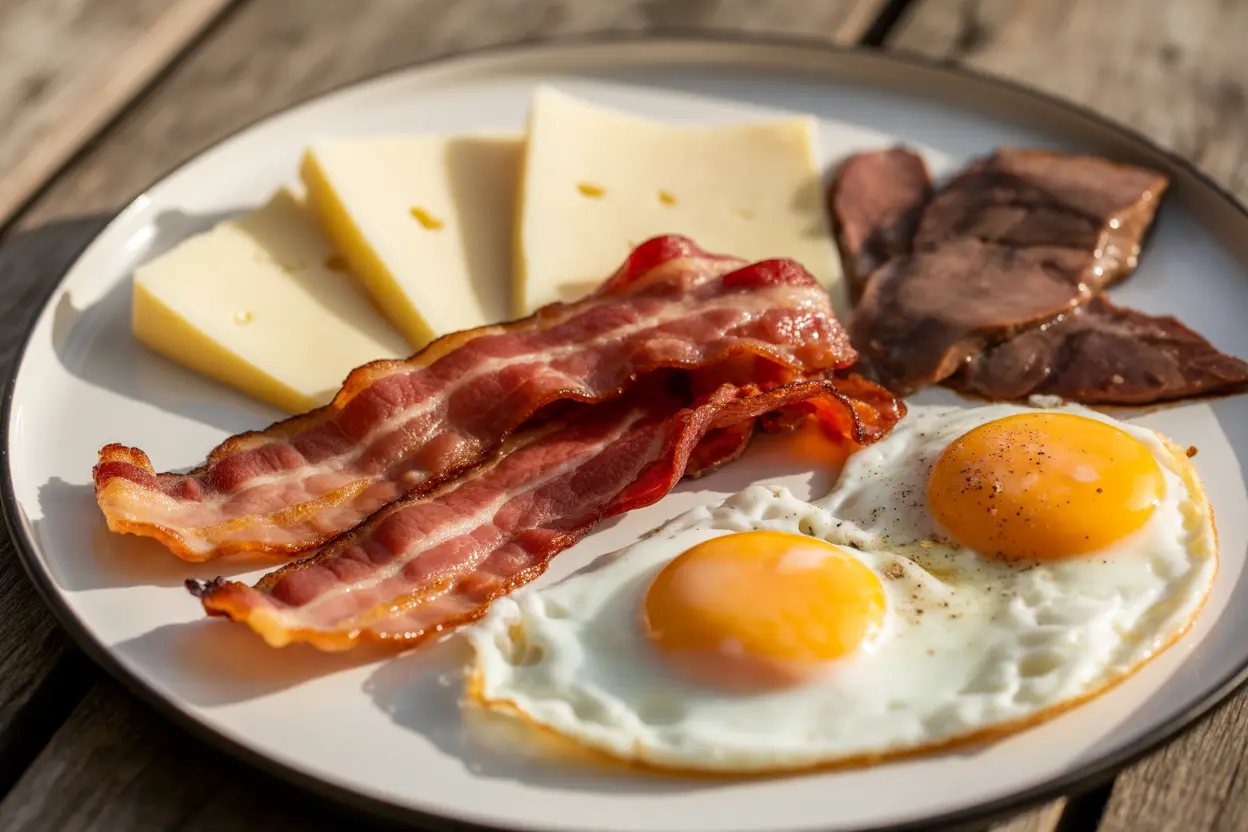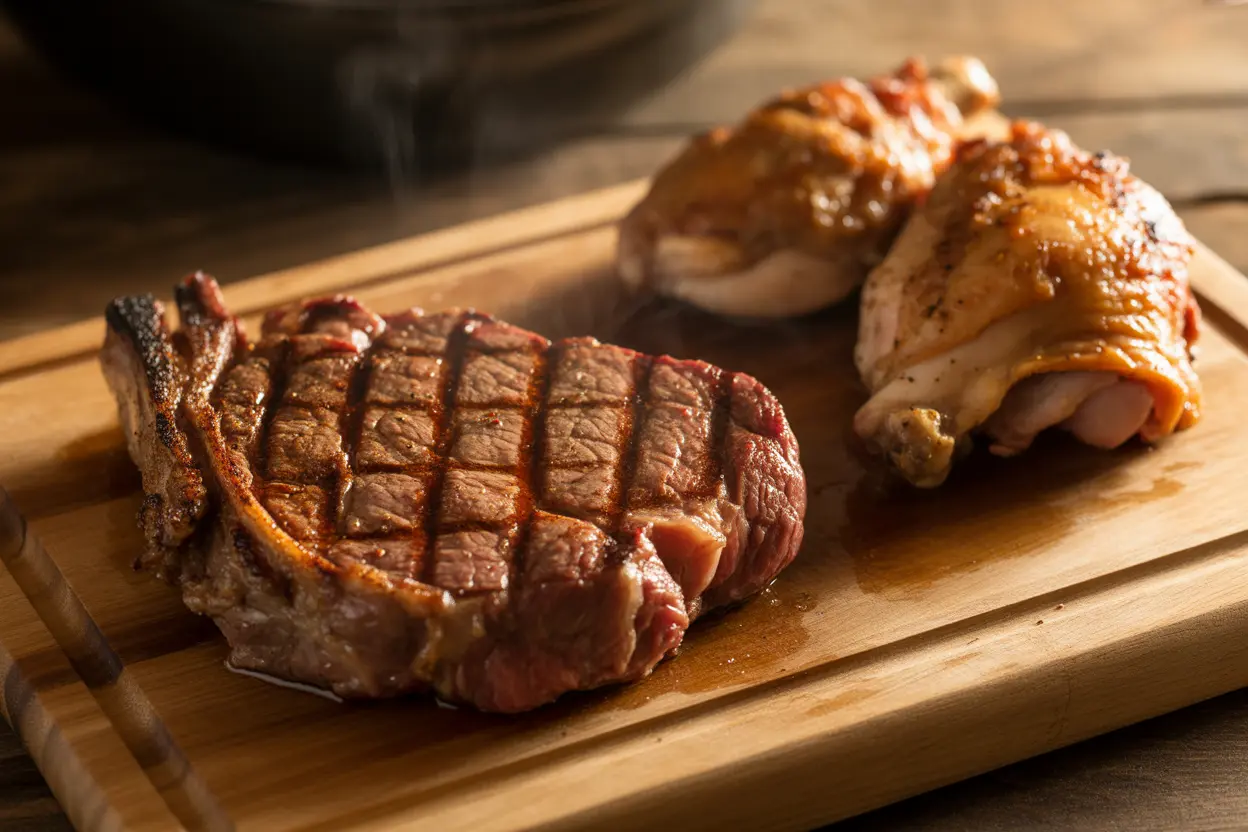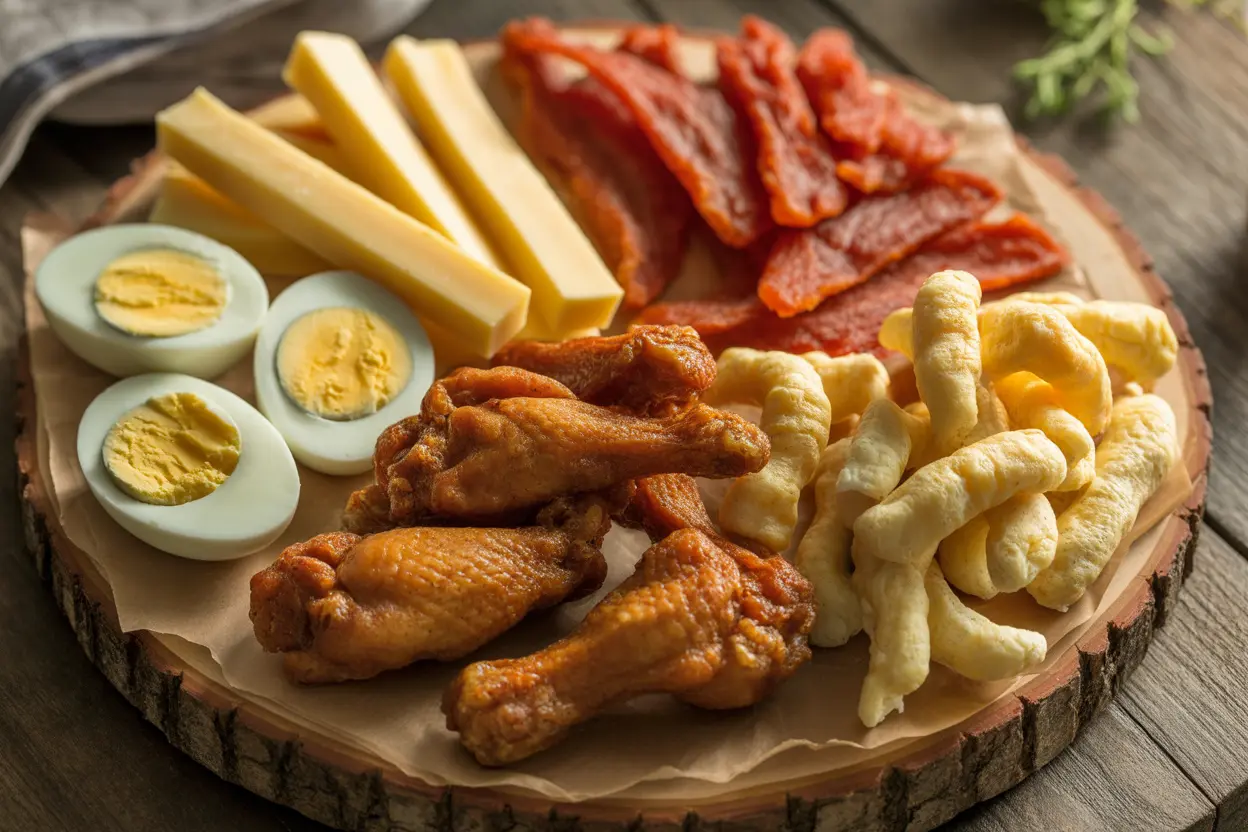What is the Carnivore Diet?
If you’ve been wondering about carnivore diet recipes, you’re diving into a straightforward yet fascinating way of eating. The carnivore diet is all about eating animal-based foods exclusively—basically meat, fish, eggs, and certain dairy items. It’s a niche within the low-carb, keto-style worlds where plants are put on the sidelines. Curious how this works? This approach is gaining momentum for its simplicity and potential health benefits. For more on the foundational principles, check out tips for success on a meat-based lifestyle.

Basic Principles and Allowed Foods
The essence of the carnivore diet revolves around eating animal-based nutrition primarily. Think of it as going back to the primal fuel for our bodies: rich proteins and fats from animals. Allowed foods include cuts of beef, pork, lamb, game meats, fatty fish, eggs, and some dairy like cheese and butter, depending on your tolerance. You’ll ditch all fruits, vegetables, grains, and processed foods. For a comprehensive food list for carnivore diet followers, this clean keto resource can help you grasp what to eat on this animal-based eating plan as you begin.
Meat Varieties: Beef, Pork, Lamb, and Game
When focusing on carnivore diet recipes, beef takes center stage. It’s hearty, versatile, and nutrient-packed. From ground beef patties to thick ribeyes, you can’t go wrong. Pork belly offers a rich, fatty choice and lamb brings in unique flavor profiles. Game meats like venison provide variety and nutrient density often absent in conventional livestock. These protein powerhouses form the foundation for delicious meat-based meals inspiration that will keep your palate satisfied.
Fish and Seafood Options
Don’t underestimate the taste and health punch of seafood on a carnivore diet. Fatty fish such as salmon provide omega-3s, while shrimp and sardines add diversity and texture. These options keep your diet interesting while meshing perfectly with the carnivore lifestyle.
Eggs and Dairy Choices
Eggs are true MVPs in breakfast or anytime meals—packed with protein and fat. Many carnivore devotees include dairy like hard cheeses or butter, giving variety to textures and tastes. Just remember, dairy tolerance varies person to person on the carnivore diet.
Classic Eggs and Bacon
Start your day with a timeless combo—crispy bacon and eggs fried or scrambled in butter. It’s quick, delicious, and hits the macronutrient marks. This duo makes for an easy carnivore meal any time, fueling you with ample protein and fats. Want to spice up your mornings? Try adding some of your favorite simple meat-based recipes to the mix to switch things up with minimal fuss.
Carnivore Cheesecake Mousse and Dairy-based Breakfasts
If you’re looking for something decadent yet compliant, a carnivore cheesecake mousse made from cream cheese and eggs can be a delightful twist. Pair it with slices of cheese or a buttery omelet for a dairy-friendly breakfast option. These recipes keep your mornings varied without straying from diet rules.
Organ Meat Additions for Breakfast
For a nutrient boost, incorporate organ meats like beef liver or kidney into your breakfast routine. Sautéed liver with eggs or a smooth pâté can be a surprising but tasty addition. The nutritional importance of organ meats is massive—they’re often called nature’s multivitamins. If you’ve never tried these, there’s no better time!

Simple Grilled or Pan-Fried Steak
Nothing beats a well-cooked steak after a busy day. Use animal fats like tallow or butter to sear your beef to perfection, ensuring a crispy crust and juicy center. Season simply with salt and pepper to highlight the meat’s natural flavors. For more steak recipes carnivore fans adore, try experimenting with different cuts and doneness levels. This is one staple that never fails.
Roasted Chicken Thighs with Crispy Skin
Chicken thighs offer rich flavor and a good fat profile. Roasting with the skin on creates a crispy, mouthwatering texture that’s sure to satisfy. A sprinkle of salt and pepper before roasting in animal fat boosts taste without adding carbs. This dish fits wonderfully into a carnivore diet meal plan.

Cheese-Stuffed Meatballs and Hardcore Smash Burgers
Take ground meat recipes up a notch with cheese-stuffed meatballs for that melty surprise inside. Smash burgers cooked in butter or animal fat provide crispy edges and juicy meat—pure carnivore comfort food. These dishes are perfect for anyone craving hearty, flavorful bites while sticking strictly to carnivore principles.
Seafood Dishes: Baked Salmon, Shrimp, and Sardines
Baking salmon in butter with a pinch of salt creates a flaky, satisfying dish. Shrimp sautéed quickly in animal fats or sardines eaten right from the can add simple, nutrient-dense options that keep the menu fresh and exciting.
Organ Meat Entrees: Beef Liver and Heart
If you want to really embrace nutrient density, try beef liver or heart cooked simply with salt and butter. These organ meats pack in vitamins and minerals critical for long-term health on a carnivore diet. For tips on why include organ meats and top organ meat options, this great resource will be your guide.
Hard-boiled Eggs and Cheese Sticks
Hard-boiled eggs are a perfect grab-and-go snack, easy to prepare in bulk. Cheese sticks provide a tasty, portable fat and protein boost. Both satisfy hunger quickly between meals and align well with easy weight loss journey advice for carnivore eaters.
Salmon Jerky and Other Meat Jerky Options
Jerky is an excellent snack choice, offering concentrated protein without fuss. Salmon jerky is flavorful and packed with omega fats, while traditional beef jerky satisfies meat cravings. Check this guide for ideal carnivore diet snacks and quick animal-based snack ideas.
Chicken Wings and Pork Rinds as Snacks
Crispy chicken wings cooked in animal fat or oven-baked pork rinds deliver crunch and flavor without carbs. They make satisfying snacks or quick meals when time is tight, sticking true to carnivore diet snacks essentials.

Using Animal Fats for Cooking
Forget vegetable oils—animal fats like tallow, lard, and butter are your cooking best friends. They add rich flavor and align with the carnivore diet’s all-animal food approach. Using these fats helps achieve crisp textures and ensures nutrient synergy.
Allowed Seasonings: Salt, Pepper, and Simple Spices
Keep seasonings basic with high-quality salt and pepper. Some carnivore eaters add simple herbs or spices, but the core is simple carnivore seasoning that highlights the meat’s natural flavor. For a flavorful herb garlic butter for cooking, check this easy cowboy butter recipe.
Avoiding Plant-Based Ingredients and Condiments
Strict adherents avoid any plant-derived condiments or seasonings, as they can introduce unwanted carbs and additives. Sticking to pure animal fats and minimal seasoning is key.
Balancing Fat and Protein Intake
A successful carnivore diet meal plan hinges on the right balance of fats and proteins. Too little fat can leave you feeling hungry; too much may affect digestion. Listening to your body and adjusting cuts of meat can optimize energy and satiety.
Including Nutrient-Dense Organ Meats
Don’t skip out on organ meats—they provide vital nutrients often lacking in muscle meats. Incorporating beef liver or heart ensures you cover a broader nutrition spectrum. Learn more about the nutritional importance of organ meats.
Incorporating Dairy if Tolerated
While optional, some include carnivore-friendly dairy like aged cheeses or butter. If tolerated, these can add variety and richness to your meal plan. For anyone interested in natural wellness drink traditions, some recommend pairing with specific cleansing drinks to complement the diet.
What can you eat on the carnivore diet?
On a carnivore diet, you’ll focus exclusively on animal-based foods. This means varieties of meat like beef, pork, lamb, chicken, and game, plus fish and seafood such as salmon and shrimp. Eggs and certain dairy items like cheese and butter can also be included depending on your tolerance. Essentially, all plant foods and processed items are avoided, creating a simplified diet centered on animal-based nutrition.
What are easy meals for the carnivore diet?
Easy carnivore meals are usually straightforward with minimal ingredients. Think grilled steak with salt and pepper, scrambled eggs with bacon, roasted chicken thighs, or cheese-stuffed meatballs. These dishes offer robust flavors without complexity. Many find simple meat-based recipes essential for maintaining consistency and enjoyment.
Can you eat dairy on the carnivore diet?
Dairy is often included but depends on individual tolerance. Many carnivore dieters enjoy cheeses that are low in lactose, like hard cheeses, and butter is widely accepted. Dairy adds variety and fat, but some avoid it to minimize inflammation or digestive issues. Experiment to see what suits you best.
What snacks are allowed on the carnivore diet?
Ideal carnivore diet snacks include hard-boiled eggs, cheese sticks, chicken wings, pork rinds, and meat jerky like salmon jerky. These options provide portable, high-protein, and fat-rich quick meals that keep hunger at bay without introducing carbs.
Are condiments or seasonings allowed on the carnivore diet?
Simple seasonings such as salt and pepper are standard. Some use minimal herbs and spices, though strict variants avoid all plant-derived condiments. The focus remains on enhancing natural meat flavors without additives. For flavorful ideas, check out flavorful herb garlic butter for cooking that fits carnivore guidelines.
Conclusion
Cooking for someone on the carnivore diet involves focusing exclusively on animal-based foods such as meats, fish, eggs, and possibly dairy. Meals should be rich in protein and fat, with simple seasoning like salt and pepper. Incorporating a variety of cuts, including organ meats, ensures nutrient diversity. Easy-to-prepare dishes like grilled steaks, roasted chicken thighs, and eggs with bacon provide satisfying options. Snacks such as hard-boiled eggs and cheese sticks keep hunger at bay. Avoiding all plant products and processed foods is essential for adhering strictly to the diet. By planning meals carefully and using allowed seasonings and fats, you can create diverse, flavorful carnivore meals that support health and adherence to the diet.
